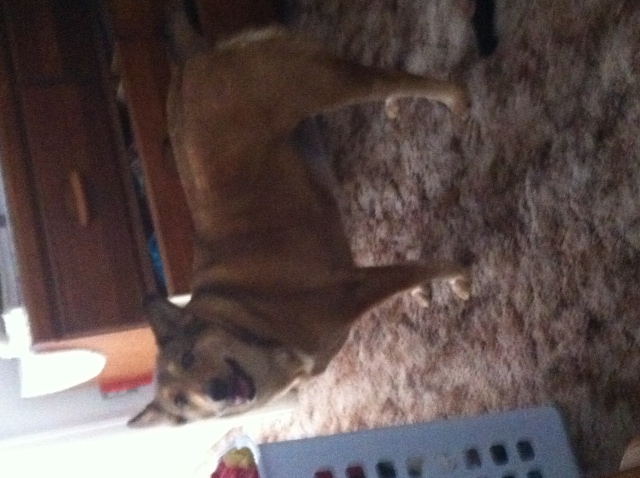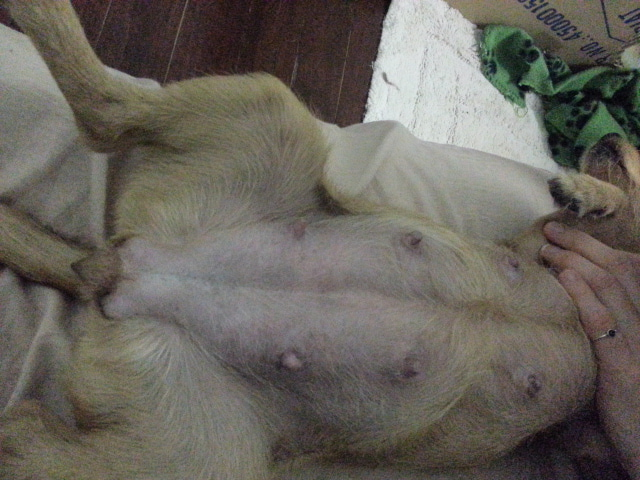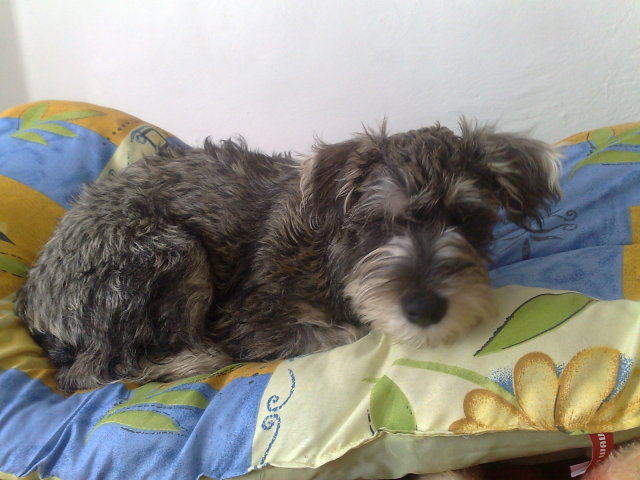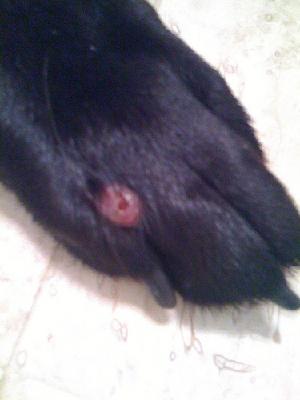Questionmy fiancee just got a mixed puppy.i think it is coon hound,rottweiler, and border collie mix. it is 3 months old and is very intellient when it comes to tricks but when it comes to learning to go on the paper or outside to go to the bathroom he wont learn it. he learned about 4 tricks in 45 min but he is having so much trouble learning this. we tried taking him outside for about a half hour every 15 min but he wont go outside. as soon as he gets inside he goes everywhere. we have tried the crate thing but he would go in the crate and roll in it. we tried that for several days and that did not work. my boyfriend just started 13 hour days until summer and does not want to leave him in a small area so he lets him run around, so when he comes home his dog goes everywhere so we need help fast. also he chews on everything. if he wants something he will climb up anything to get to it to get it down. my boyfriend has tried putting a fence up in his house since he lives in an apartment now but his dog climbs the gate. even when he puts a fence up outside he will climb out of it. we desparately need some answers on how to potty train and what to do for chewing. he has bones everywhere and toys but he wont chew on them even if we put food in a toy. also i have a pomeranian that is 9 months old and the 2 dogs fight with each other. mine is nuetered but he also starts the fight. how can i get them to be friends? please try to get answers quick as my fiancees apartment is starting to get destroyed with the dog pulling up the carpet and eating the rugs and pictures. thanks so much!
AnswerOh my, Amy. What a handful this new puppy is already!
It sounds as if he weren't kept in a very clean environment before your fiancee got him, because dogs generally will not soil their bedding area, and you say he doesn't care to not only soil his bedding but also roll around in his excrement. This is a sign of growing up in a nasty environment, and is often true of puppies that come from pet stores (puppymill puppies), irresponsible backyard breeders, and sometimes animal shelters.
He NEEDS to be kept crated when someone cannot be there to supervise him, to keep him from destroying the house. However, the most important thing is that he needs to be put on a strict feeding and bathroom schedule to keep him from soiling in his crate. It sounds as though you've tried, but you didn't stick to it. That's ok; it's never too late!
First of all, forget paper training if you want him to go outside. Paper training does absolutely nothing except teach the dog that it's okay to use the bathroom in the house, and that's what you're trying to teach him NOT to do. If there is a blanket or bed in his crate, take it out. This isn't to make him uncomfortable or to be mean; sometimes dogs will 'go' in their crate when they have a blanket or bed in there, but when the blanket or bed is removed, they aren't as likely to 'go' because they can't hide it or cover it up. Once they have learned that it's only appropriate to use the bathroom outside, they can have their blanket or bed back.
As for his schedule, he should be fed two or three times daily. Food should not be left down for him all day. Take whatever his recommended feeding amount is (either ask your vet or go by what's on the back of the dog food bag) and divide it in half or in thirds, depending on whether you're going to feed him twice or three times a day. For practicality, I will assume you're going to feed him twice a day. Say he weighs 40 pounds. He should be eating approximately 3.5 - 4 cups of food daily of puppy food. Feed him 1.5 - 2 cups of food in the morning, and the same amount in the evening. Give him 15-20 minutes to eat, and then take his bowl up. If he isn't finished, take the bowl up anyway. He will soon learn to eat all his food when it is given to him, and 15-20 minutes is plenty of time for him to finish. After he's finished eating, take him outside within 10 minutes. Take him to the area in the yard where you want him to eliminate, let him pee if he wants to (only once - not on every tree or bush or blade of grass he encounters), and walk him around in that area for a few minutes. Walking stimulates the bowels. Do not let him stop and sniff things or play or anything. Just keep him moving until he starts acting like he's going to poo (circling in one spot, squatting). Then stop and stand there. Don't talk to him or move until he has finished going potty, unless you want to teach him to 'go' on command, then, simply repeat the command over and over while he's 'going'. You can make that command anything you want; I use "go pee pee," which I use for both peeing and pooping. Then, when he's finished, praise him and play with him and make a big deal of it. Make him understand that 'going' outside makes you very happy and results in playtime. Make sure he's finished before you start praising and playing, or you may startle him or excite him and he'll stop mid-poo instead of finishing. You want him to be completely finished, so that when you go back inside, he won't feel like he needs to go in there too.
As a general rule, puppies can hold their bladder for about as many hours as they are months old. Since you say he's 3 months old, he should be taken out about every 2.5 - 3 hours to pee. When you take him out to use the bathroom, he needs to understand that that's why you're out there. Take him to the designated bathroom area and stand there and be as boring as possible until he 'goes'. THEN you can play with him or allow him to run around or whatever. Playtime and treats only come AFTER he goes potty outside.
When no one is home, he should be in his crate with a nylabone or stuffed kong toy to chew on. No rawhides, because the dog can swallow large pieces of them that will swell up in the stomach and intestines. This can cause a blockage that can be life-threatening to the dog and result in expensive vet bills as well. Rawhides are simply too dangerous to give a teething puppy, in my opinion. If you're there to watch him, and want to give him a rawhide, that's up to you, but give him the biggest size he can handle, to help prevent him swallowing large pieces. He may continue to soil his crate for a few days, but after a few days of being on a schedule, he should get the idea and stop.
As for your other dog, the Pom, I wouldn't worry about his behavior too much. The new puppy needs to be neutered in the next month or so, to prevent his becoming aggressive towards the Pom as he gets older. However, the Pom's behavior at this point isn't what you perceive it to be. They are most likely not fighting (though I can't say for certain without actually seeing them together); they are simply establishing pack order between them. The Pom was there first, and so is the alpha at this point; so he continually has to keep putting the puppy in his place. Puppies learn how to interact with other dogs and have good doggie manners from their elders. This is normal dog behavior, and you and your fiancee need to back the Pom when he has to get after the puppy. Do not encourage the behavior, but when the Pom has 'had enough' of the puppy and starts growling and snapping at him, then go and remove the puppy from the situation. Don't go and coddle the Pom, or pick him up and take him away. Go and get the puppy.
Also, the Pom needs to receive attention, food, etc. before the puppy. When you come home, or during play time, the Pom should be petted and spoken to first, or receive the toy first. This will help reinforce his place above the puppy. Eventually, the order may change as the puppy gets older. He may turn out to be the dominant one. If that is the case, then you both need to behave accordingly. Right now, though, I wouldn't worry about the 'fighting'.
Good luck and please let me know if there's anything else I can help you with!
Kristen

 My very overly protective puppy
Question
Marla :)
Hello! I adopted a four year o
My very overly protective puppy
Question
Marla :)
Hello! I adopted a four year o
 high temp tummy
Question
swollen nipples?
My two year old Jack R
high temp tummy
Question
swollen nipples?
My two year old Jack R
 Anxiety separation????
Question
donovan
HI then, I got my schnauzer when it w
Anxiety separation????
Question
donovan
HI then, I got my schnauzer when it w
 Redish bump between dogs toes
QuestionHello I have a three year old Australian Shephe
Redish bump between dogs toes
QuestionHello I have a three year old Australian Shephe
 Live worms came out in my dogs poop and he has some rashes?
Question
The Rashes
She is 15 months old and is
Live worms came out in my dogs poop and he has some rashes?
Question
The Rashes
She is 15 months old and is